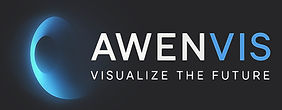🎬 How to create 3D product animations
3D product animation is one of the most effective ways to capture customer attention, demonstrate product performance, and stand out from the competition. Instead of a static image, we have live movement, dynamics, emotion, and narrative. But how exactly is such animation created?
Below we present the entire process step by step – from brief to finished film.
How is an interactive model different from a traditional one?
We start by gathering information:
- What kind of product is this?
- What features do we want to show?
- Who is the film for?
- Where will the animation be used (website, advertising, trade fairs, social media)?
At this stage, we determine the animation style (realistic, technical, marketing), length and prepare the script – i.e. what the viewer will watch step by step.
🛠️ 2. 3D product model
If the product hasn’t been visualized beforehand, the graphic designer creates an accurate 3D model. Often, they use technical documentation, CAD drawings, photos, or scans of the product.
The model should be:
- detailed but optimized for movement,
- matched to the scale and proportions of the real object.
🧵 3. Texturing and Materials
Realistic materials are then applied to the 3D model: metallic surfaces, glass, plastic, fabrics, wood – anything that matches the original.
Well-prepared materials are the foundation of realistic animation. Lighting and environments—i.e., backgrounds, reflections, and shadows—are also added.
🎥 4. Animation – Movement and Scenes
- This is the most important stage – this is where the product comes to life. Animators create:
- camera movements (pans, rotations, zoom),
- component animation (e.g. opening, assembly, disassembly),
- special effects (e.g. light, particles, explosion of details).
- Technical animations showcase internal workings—e.g., a cross-section of an engine, airflow, or a closing mechanism. Marketing animations showcase emotions, aesthetics, and details.
🎶 5. Music, voice-over, subtitles (optional)
To give the animation character, the following is added:
- background music,
- narration (voice-over),
- inscriptions or supporting graphics (e.g. technical parameters).
This works great in advertising or presentation videos, especially for e-commerce.
📽️ 6. Rendering and editing
After all the movements are programmed, the animation is rendered – that is, the computer calculates each frame of the film, creating the finished material.
Rendering can take from a few hours to a few days, depending on the video length and quality (Full HD, 4K, 60fps, etc.).
The video is then edited, optimized, and exported to its intended format:
- MP4 for website,
- MOV for presentations,
- social media versions (Reels, Shorts, TikTok).
📊 Where to use 3D product animations?
✅ Websites and landing pages
✅ E-commerce – product descriptions
✅ Advertising campaigns (Facebook, YouTube, LinkedIn)
✅ Presentations for investors and clients
✅ Trade shows, showrooms, B2B meetings
✅ Social media
💡 Why is it worth investing in 3D animation?
- The product speaks for itself – no need to read the instructions
- Increases conversion – because it shows function and quality in an attractive way
- Savings on video sessions – animation does not require a physical studio
- It stands out on the Internet – compared to ordinary photos and graphics
🧠 Summary
3D product animation is a modern presentation method that combines aesthetics with functionality. It allows for the dynamic presentation of what a standard photo can’t capture. It’s an investment that sells, builds a brand, and attracts attention.
